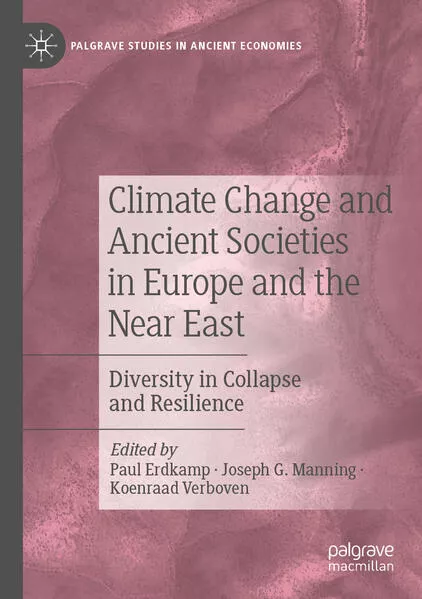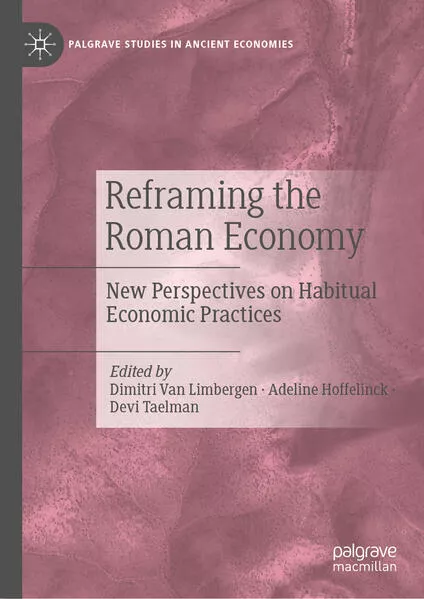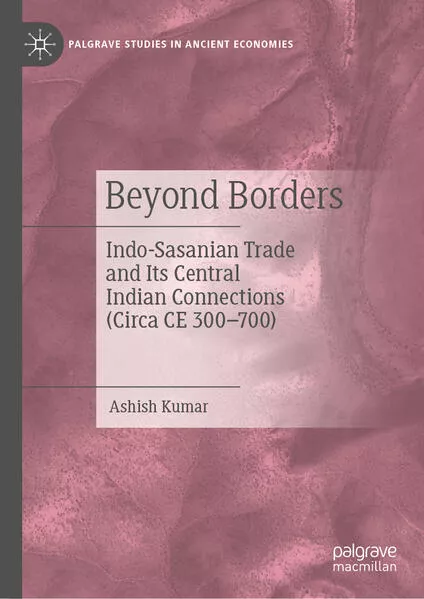Palgrave Studies in Ancient Economies
Climate Change and Ancient Societies in Europe and the Near East
Chronologie aller Bände (1 - 5)
Die Reihenfolge beginnt mit dem Buch "Climate Change and Ancient Societies in Europe and the Near East". Wer alle Bücher der Reihe nach lesen möchte, sollte mit diesem Band von Paul Erdkamp beginnen. Der zweite Teil der Reihe "Reframing the Roman Economy" ist am 19.11.2022 erschienen. Mit insgesamt 5 Bänden wurde die Reihe über einen Zeitraum von ungefähr 3 Jahren fortgesetzt. Der neueste Band trägt den Titel "Legal and Economic Practice in the Roman World, Volume I".
- Anzahl der Bewertungen für die gesamte Reihe: 1
- Ø Bewertung der Reihe: 5
- Start der Reihe: 06.11.2022
- Neueste Folge: 12.12.2025
Diese Reihenfolge enthält 4 unterschiedliche Autoren.
- Autor: Erdkamp, Paul
- Anzahl Bewertungen: 1
- Ø Bewertung: 5.0
- Medium: Buch
- Veröffentlicht: 06.11.2022
- Genre: Roman
Climate Change and Ancient Societies in Europe and the Near East
Climate change over the past thousands of years is undeniable, but debate has arisen about its impact on past human societies. This book explores the link between climate and society in ancient worlds, focusing on the ancient economies of western Eurasia and northern Africa from the fourth millennium BCE up to the end of the first millennium CE.
This book contributes to the multi-disciplinary debate between scholars working on climate and society from various backgrounds. The chronological boundaries of the book are set by the emergence of complex societies in the Neolithic on the one end and the rise of early-modern states in global political and economic exchange on the other. In order to stimulate comparison across the boundaries of modern periodization, this book ends with demography and climate change in early-modern and modern Italy, a society whose empirical data allows the kind of statistical analysis that is impossible for ancient societies.
The book highlights the role of human agency, and the complex interactions between the natural environment and the socio-cultural, political, demographic, and economic infrastructure of any given society. It is intended for a wide audience of scholars and students in ancient economic history, specifically Rome and Late Antiquity.- Autor: Van Limbergen, Dimitri
- Anzahl Bewertungen: 0
- Ø Bewertung:
- Medium: Buch
- Veröffentlicht: 19.11.2022
- Genre: Roman
Reframing the Roman Economy
- Autor: Kumar, Ashish
- Anzahl Bewertungen: 0
- Ø Bewertung:
- Medium: Buch
- Veröffentlicht: 31.10.2023
- Genre: Roman
Beyond Borders
This book examines the economic history of ancient South Asia by situating the Malwa region of Central India within Afro-Eurasian trade networks to illuminate the role of traders in the political, religious and economic processes connected with the Indo-Sasanian trade in the period of five centuries, circa CE 300-700.
The book challenges the long-held centrality of the Roman factor in the South Asian economy by locating the Indo-Sasanian interactions in long distance economic networks with trade as a central feature. It considers the role and influence of traders as an understudied group affecting the contribution of the Indian economy to the world system. Amidst rapidly changing political landscapes, traders of Indian and Sasanian origins are studied as conscious political beings, who formed ties with varieties of polities and religious communities to secure their commercial interests. In addition, their commercial interactions with their Sogdian (Central Asia) and Aksumite (East Africa) counterparts are analyzed. The book also considers the nature of trade routes and the specific connections between mercantile and religious networks, including patterns of construction of religious shrines and temples along trade routes. Integrating epigraphic, numismatic, literary and archaeological evidence, this book moves away from a marginal treatment of the Indo-Sasanian trade in Indian history, and demonstrates how regional economic history must address a plurality of causes, actors, and processes in its assessment of the regional economy. The book will be of interest to students and academics of Indian economic history, as well as the ancient economies of South Asia more broadly.
- Autor: Mataix Ferrándiz, Emilia
- Anzahl Bewertungen: 0
- Ø Bewertung:
- Medium: Buch
- Veröffentlicht: 12.12.2025
- Genre: Sonstiges
Legal and Economic Practice in the Roman World, Volume I
This edited volume examines the legal and economic world of the Romans through concepts, structures, and objects that reveal practices of standardization and localism. It explores the myriad ways in which the Roman Empire became an integrated political, social and economic system.
Split across two volumes, the collection addresses the dynamic interaction between Rome and its provinces in developing institutions crucial to societal and economic development. It challenges notions of uniformity, demonstrating how tensions between imperial standardization and local cultures could both drive innovative legal and economic practices and hinder empire-wide integration. The chapters explore broad questions from various disciplinary perspectives, including ancient economic history, law, papyrology, epigraphy and archaeology. Contributions cover diverse topics such as weights, measures, and coinage, legal practices, taxation, and cultural symbols. Each chapter investigates how, even as local communities adopted practices associated with Rome as a ruling power, local customs could, in turn, influence practices across the Empire.
By illuminating these reciprocal relationships, this book recontextualizes Roman standardization—not merely as a tool of imperial domination but as evidence of diverse socioeconomic practices and cross-cultural exchanges. It will be a valuable resource for scholars of ancient economic history, classical archaeology, and ancient law, as well as anyone interested in the economy and culture of Ancient Rome.
- Autor: Mataix Ferrándiz, Emilia
- Anzahl Bewertungen: 0
- Ø Bewertung:
- Medium: Buch
- Veröffentlicht: 12.12.2025
- Genre: Sonstiges
Legal and Economic Practice in the Roman World, Volume II
This edited volume examines the legal and economic world of the Romans through concepts, structures, and objects that reveal practices of standardization and localism. It explores the myriad ways in which the Roman Empire became an integrated political, social and economic system.
Split across two volumes, the collection addresses the dynamic interaction between Rome and its provinces in developing institutions crucial to societal and economic development. It challenges notions of uniformity, demonstrating how tensions between imperial standardization and local cultures could both drive innovative legal and economic practices and hinder empire-wide integration. The chapters explore broad questions from various disciplinary perspectives, including ancient economic history, law, papyrology, epigraphy and archaeology. Contributions cover diverse topics such as weights, measures, and coinage, legal practices, taxation, and cultural symbols. Each chapter investigates how, even as local communities adopted practices associated with Rome as a ruling power, local customs could, in turn, influence practices across the Empire.
By illuminating these reciprocal relationships, this book recontextualizes Roman standardization—not merely as a tool of imperial domination but as evidence of diverse socioeconomic practices and cross-cultural exchanges. It will be a valuable resource for scholars of ancient economic history, classical archaeology, and ancient law, as well as anyone interested in the economy and culture of Ancient Rome.




